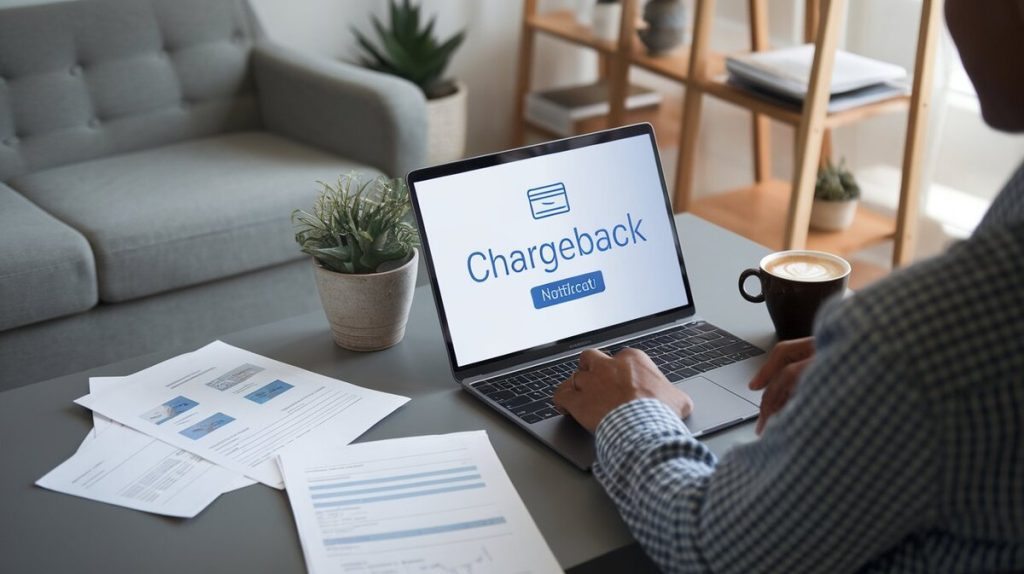Chargebacks occur when a cardholder disputes a transaction, requesting a refund from their bank. They can lead to financial loss, higher fees, and penalties for merchants. Handling chargebacks effectively is crucial to minimize damage and keep a business running smoothly.
What is the Chargeback Process?
When a cardholder files a dispute, the process involves the following steps:
- Cardholder Files a Dispute: The customer contacts their bank to dispute a charge, citing reasons like fraud, unreceived goods, or dissatisfaction.
- Issuing Bank Investigates: The bank temporarily removes the funds from the merchant’s account and begins investigating the dispute.
- Merchant Response: The merchant has a limited window (usually 30-45 days) to respond with evidence.
Fact: According to Visa, 75% of chargebacks are due to friendly fraud, where customers dispute legitimate transactions.
Types of Chargebacks
Chargebacks are categorized into three primary types, each requiring different responses.
1. Merchant Error
Errors like duplicate billing, wrong charges, or failure to follow transaction protocols lead to these chargebacks.
Prevention:
- Double-check transactions before processing.
- Provide clear terms of service and receipts.
2. Friendly Fraud
Customers dispute valid charges, often claiming they didn’t receive a product or service. Friendly fraud is responsible for 60% of chargebacks (Mastercard, 2023).
Response:
- Provide order confirmation, shipping information, and proof of delivery.
3. True Fraud
These disputes arise from unauthorized transactions, typically involving stolen card details.
Prevention:
- Implement secure payment methods like AVS (Address Verification System) and 3D Secure.
- Monitor for suspicious transaction patterns.

How to Respond to a Chargeback
1. Check the Chargeback Notice
The chargeback notification will include a reason code that explains why the chargeback was filed. Understanding the code helps in gathering the right documentation. For instance, Visa Reason Code 13.1 means “services not provided,” while Mastercard Code 4837 indicates a fraudulent transaction.
2. Gather Evidence
Depending on the chargeback reason, merchants should provide specific types of evidence. Here are typical documents required:
- Receipts, invoices, and order confirmations.
- Proof of delivery for physical goods.
- Communication logs between the merchant and the customer.
- Website screenshots showing terms, product descriptions, or transaction processes.
Table 1: Types of Evidence for Different Chargeback Reasons
| Chargeback Reason | Required Evidence |
|---|---|
| Fraudulent Transaction | AVS, CVV verification, signed receipts |
| Service Not Provided | Delivery proof, customer communication |
| Unauthorized Transaction | Customer purchase history, IP logs |
3. Prepare a Rebuttal Letter
The rebuttal letter should explain why the transaction was legitimate and include evidence that disproves the customer’s claim. It must be clear, concise, and directly address the chargeback reason.
Strategies to Prevent Chargebacks
Prevention is key to reducing chargebacks. Here are some methods to minimize chargeback occurrences.
- Use Secure Payment Processing
Implement AVS, CVV checks, and 3D Secure protocols to verify the customer’s identity and transaction legitimacy. A Mastercard report shows that using 3D Secure 2.0 can reduce fraud-related chargebacks by 50%. - Clarify Terms and Conditions
Ensure that customers can easily access and understand your terms and conditions, return policies, and shipping details. This prevents misunderstandings that lead to disputes. - Improve Customer Service
Good customer service helps resolve issues before they escalate to chargebacks. Respond to complaints promptly and consider offering refunds when necessary to avoid disputes.
Responding Effectively to Chargebacks
Effective responses to chargebacks can help recover disputed funds. Merchants should follow these steps to ensure a strong defense.
- Check the Reason Code
The reason code provides insight into the chargeback’s nature. Common reason codes include:
- Visa Code 13.1: “Service Not Provided.”
- Mastercard Code 4837: “No Cardholder Authorization.”
- Discover Code 4752: “Fraudulent Transaction.”
- Compile Evidence
Evidence must directly refute the cardholder’s claims. Typical evidence includes:
- Proof of product delivery.
- Communication logs.
- Payment verification details (AVS, CVV).
- Draft a Rebuttal Letter
Summarize your defense and attach the necessary documents. The letter should briefly describe the situation and argue why the chargeback should be reversed.
Partner with Reliable Chargeback Prevention Services
Working with a chargeback prevention partner helps streamline your response process and improves your chances of success. Consider partnering with Merchanto.org, an official partner of Visa and Mastercard. Merchanto specializes in chargeback prevention and can help you secure your transactions from fraud and disputes. Learn more here.

Chargeback Reason Codes: Understanding and Using Them
Understanding chargeback reason codes is essential for formulating an effective response. These codes vary by card network and give insight into the nature of the dispute.
Table 2: Chargeback Reason Codes
| Card Network | Reason Code | Description |
|---|---|---|
| Visa | 13.1 | Services Not Provided |
| Mastercard | 4837 | Fraudulent Transaction |
| Discover | 4752 | No Authorization |
| American Express | F29 | Goods/Services Not Received |
Knowing these codes helps merchants focus on collecting the right type of evidence.
Impact of Chargebacks on Your Business
The cost of chargebacks goes beyond the disputed amount. According to Mastercard, every $1 lost to chargebacks costs businesses $2.40 due to processing fees, administrative work, and lost goods. In 2023, chargebacks were projected to cost businesses $117 billion, with merchants shouldering $79 billion of these costs.
To avoid higher fees and penalties, it’s essential to keep your chargeback ratio below 1%. Businesses with frequent chargebacks face increased processing fees, higher risks, and the possibility of having their accounts terminated by payment processors.
Fact: A high chargeback ratio can also place a merchant on Visa’s Chargeback Monitoring Program (CMP) or Mastercard’s Excessive Chargeback Program (ECP), resulting in penalties and additional scrutiny.
Handling Chargeback Submissions
The response to a chargeback must be thorough and timely. Different payment processors have varying submission processes:
- Stripe allows merchants to submit evidence directly through its dashboard. The response time is typically 30 days.
- Braintree gives merchants 45 days to gather evidence and submit their case.
- Checkout.com provides automated tools to monitor and manage disputes in real time.
Table 3: Submission Timelines by Payment Processor
| Payment Processor | Response Deadline | Submission Method |
|---|---|---|
| Stripe | 30 days | Dashboard submission |
| Braintree | 45 days | Email or online submission |
| Checkout.com | 30 days | Automated dispute tool |
Being familiar with these requirements can prevent missed deadlines and improve your chances of success.
Final Thoughts
Chargebacks are a significant issue for any business, but with the right strategies, you can reduce their impact. Implementing secure payment systems, maintaining clear communication with customers, and partnering with reliable services for chargeback prevention can save both time and money.
This guide provides practical steps and real data to help merchants respond to chargebacks efficiently. Following these processes can protect your business from unnecessary losses and help maintain smooth operations while keeping chargeback ratios low.



